This was published 1 year ago
Curry, cheap caravans and buried beers: Bathurst 1000 endures for diehard fans
Some parties drive in before the gates open and camp in the holding area. Try telling this lot the Melbourne Cup is more important.
By Emma Kemp
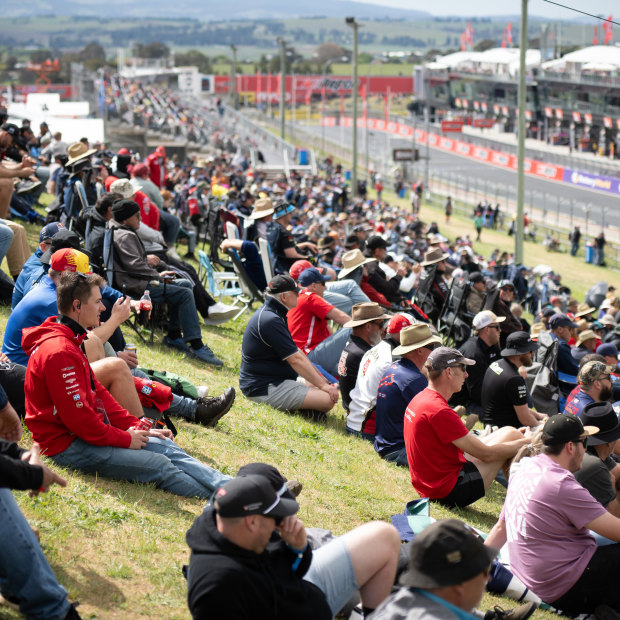
Spectators watch the qualifying and support races on the Friday before race day at the Bathurst 1000.Credit: Wolter Peeters
Peter Moody turned 50 in January, and this is his 50th visit to watch the Bathurst 1000. It doesn’t take a mathematician to work out that he’s been attending since the year of his birth.
“That’s correct,” he says. “Unfortunately, we missed the COVID year because there was no camping here. But I got two visits the following year for the Repco 500 and then Repco 1000, which made up my 50. My mum and dad started camping here in 1964, and to this day we still retain the site. I’ve become the group organiser of our 32 sites.”
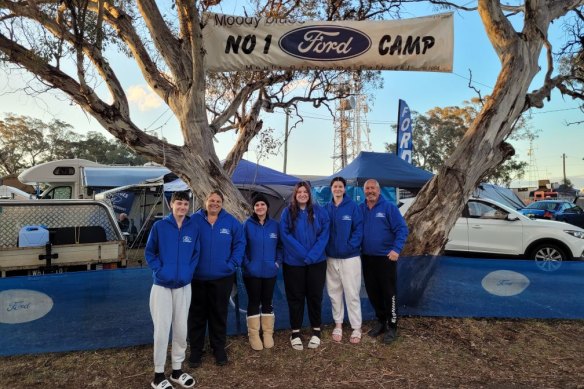
Peter Moody (right), shown with family, is the group organiser for the Moody Blues No.1 Ford Camp every year at Bathurst.
Moody is talking about the Reid and Sulman camping ground near the top of the hill at Mount Panorama. And for one week every October, it is transformed into the “Moody Blues No.1 Ford Camp”. The merch includes hoodies, beanies and stubby holders, and a banner honouring his late father is hoisted up a tree.
The Moody family only need to drive from Camden, but they are joined by others from as far as Queensland, Victoria and Tasmania for the annual Supercars pilgrimage. The planning and packing starts two months out, and the band of Moody men and women aim to arrive at exactly 9.30am on the Saturday before the event – half an hour after the gates open.
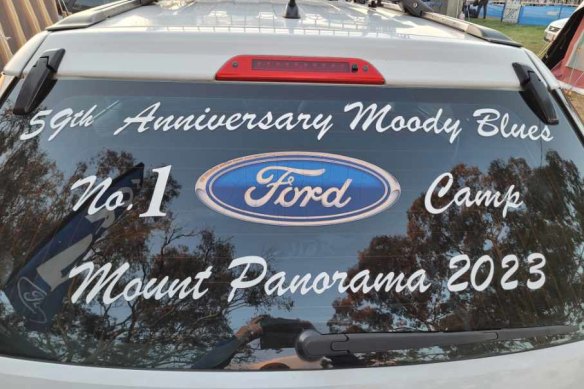
The Moody Blues No.1 Ford Camp is a tradition.
They are far from the first. Some parties drive in on the Friday evening and camp in the holding area, just to secure their spot at the front of the queue for the biggest event of the year. The Great Race. The real race that stops the nation. Try telling this lot the Melbourne Cup is more important. Try telling them no one cares about the Bathurst 1000 any more, just as it hits its 60th anniversary since moving from Victoria’s Phillip Island circuit. “When you come to Bathurst,” says Moody, “and you see that sign about 20 kilometres out of town, it just gives you goosebumps.”
In recent years, Supercars has suffered through an apathy narrative. The one which states it will never achieve the same cut-through as rugby league or cricket. And which cautions its loyal fan base that they are the exception, not the rule, in an Australian marketplace saturated with more recognisable names than Craig Lowndes, Mark Winterbottom and Jamie Whincup.
Its shift away from its old September long weekend slot in 2001 felt like a confirmation it could not compete with the AFL and NRL grand finals. In a post-COVID world, though, this may be not be too dissimilar from the apathy narratives afflicting other sports. And it does boast one advantage: a date on the calendar which almost guarantees more than a million eyeballs watching on television.
“Waking up as a young bloke and flicking the TV on was like Christmas morning,” says Mark Skaife, a winner of six Bathurst 1000 races and five V8 Supercar Championships who now works as a Fox Sports pundit. “It’s just got this amazing gravitas. I call it the grand final. It’s one of those ones where most families, even if you’re not really a car racing fan, turn it on through the day. I wouldn’t say everyone sits down for the whole day to watch it, but they might have it running while they’re having a barbecue.”
For the rusted-on, Skaife is a protagonist in the passion. He has been there and done it several times and has the yarns to back it up. That includes the 1992 win alongside Jim Richards, who called the crowd “a pack of arseholes” from the podium after being booed by locals unhappy a Nissan had trumped traditional Bathurst brands Ford and Holden during a race-ending deluge.
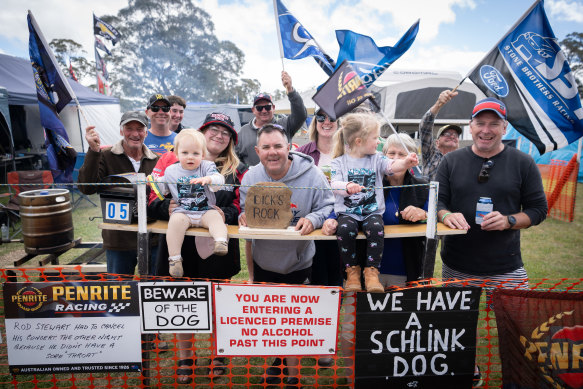
The Lee family have come from Culcairn in south-western NSW to watch the Bathurst 1000.Credit: Wolter Peeters
Ten years later they won together again, this time as part of the championship, on a day so windy that plastic bags and other debris blocked the radiator duct on the front of the car and it overheated to the point the water vapour inside reached 117 degrees celsius. “The team were trying to convince me to either slow down or come in,” Skaife says. “So to win Australia’s biggest race with that level of stress and tension was very special.” That time, they drove with Holden. Meaning that time, the crowd were on their side. Richards made amends by calling them “a pack of wonderful people”.
These stories are moments which do not just exist relative to certain points in time throughout the event’s history, but do so in parallel to the diehards’ experience. The wild winds of 2002 were not just remembered by Skaife, but also by campers whose tents were flattened.
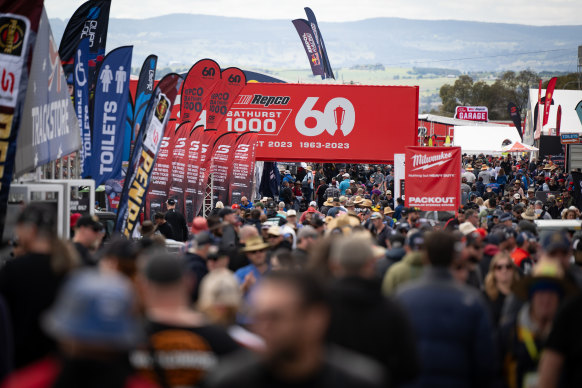
Spectators watch the qualifying and support races on the Friday before race day at the Bathurst 1000.Credit: Wolter Peeters
“Over 15 years ago, me and my wife had a really bad experience in a tent,” recalls Moody. “And the following year, we got a cheap caravan to try and make it a bit better. Because we had young kids at the time and we were outside holding gazebos to try and stop ’em from flying away.”
Jeff Honsa and his friend Mark Thompson have just cooked a Thai chicken curry for 45 people at the Chase campground, where he has been a regular for more than two decades.
The 67-year-old from Brisbane first attended in 1974, when he was a teenage aircraft maintenance engineer apprentice with Qantas. He and some mates camped up on the mountain where there were no bookings and it “gets pretty rowdy”. In 1978 he returned with his wife-to-be, and then in 1997 made the trip annual with their kids. These days the set-up is so elaborate they construct a floor-boarded pavilion which features a big screen showing all the action live.
The attraction for Honsa is two-fold. The racing piques his mechanical interest, and the event offers the chance to socialise. “It is just the love of motor racing and camping all locked together,” he says.
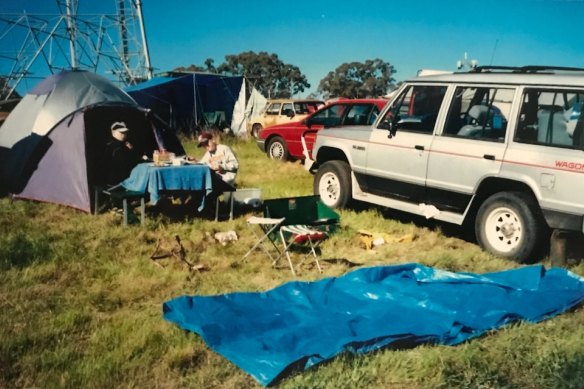
The Honsa set-up in 1997.
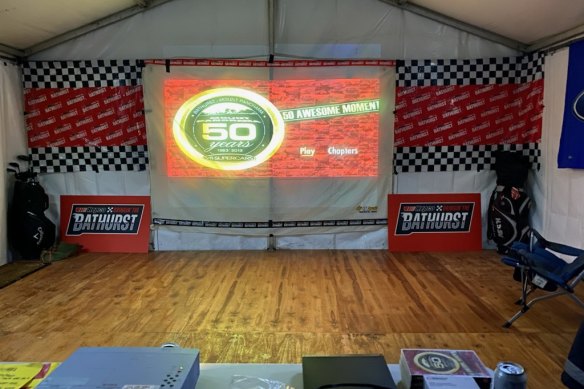
The pavilion where Jeff Honsa’s camp members can watch the race away from the track.
For some, in the past at least, part of the fun was flouting the rules by burying boxes of beer to skirt venue alcohol limits. “That’s what used to happen back in the day,” says Moody. “But this day and age, if me and my wife were to come in, so we arrived, which we did in the same car, you’re allowed one box of beer per adult. So I could bring two boxes of beer in when I arrive – which is certainly ample for us – but you could go down and bring one more box of beer.”
On the track, most critiques centre around the Gen3 cars, which Supercars says were designed “with an eye on increased road relevance and improved racing” and mark the biggest change since the implementation of V8-powered Commodores and Ford Falcons in the 1990s. The idea is that they act more like road cars, which sounds like a throwback to the old “win on Sunday, sell on Monday” marketing tool of the 1960s and early 1970s, when Bathurst was held for stock-standard production cars.
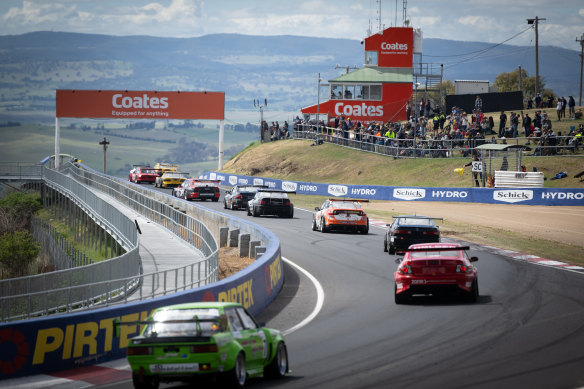
Qualifying on the Friday before Sunday’s Bathurst 1000.Credit: Wolter Peeters
“I get that, with the Gen3 motor racing, people don’t like it as much,” says Honsa. “A lot more people now are moving to the 12-hour [race]. We come back for the 12-hour each year as well, and it’s for the people who want to bring back the production cars.
“It’s just impossible to run the Bathurst 1000 as a production car because it’s still Ford and GM. In all, people aren’t dissatisfied with the move to Gen3, just how much the cars have changed from the first cars to the Gen1, Gen2 and now to this one has caused a bit of concern.
“But people come here because this is Bathurst. The campgrounds are sold out, so you could run go-karts or anything around here and I think people would still come because it’s so much fun.”
News, results and expert analysis from the weekend of sport sent every Monday. Sign up for our Sport newsletter.